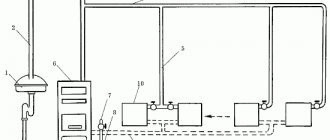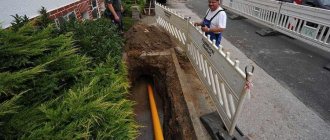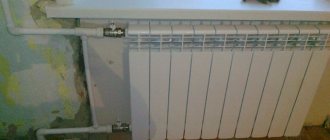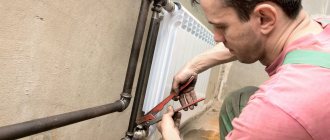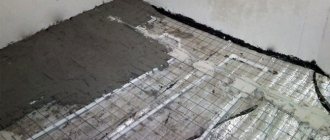In this article we will cover:
- Risks of construction near a gas pipeline
- Types of gas pipelines
- Security zones depending on the category of the gas pipeline
- The procedure for organizing security zones of gas pipelines
- Responsibility for violation of the security zone
Construction near gas pipelines today is strictly regulated. And this is not surprising: such communications are quite dangerous, especially if they are damaged through carelessness. The consequences can be the most unpredictable.
To prevent this from happening, special security zones have been marked in the areas where gas pipelines pass. Without a clear understanding of their essence, as well as knowledge of the regulations associated with these plots of land, one may not even think about constructing buildings near gas pipelines.
Risks of construction near a gas pipeline
What risks should be taken into account when planning construction near a gas pipeline? There are many different factors that can be classified into two main types. These are operational risks (the likelihood of fires and explosions on the gas pipeline) and violation of security zones. In this case, in the second case, it is necessary to distinguish between private security territories that provide protection of gas pipes from damage during construction, repair or other work, as well as MSD (minimum distance zones), which are provided to protect people and buildings in emergency situations on gas pipelines.
Industrial risks on gas pipelines include destruction of pipes with the potential scattering of metal fragments, particles of earth and stones, gas combustion, high temperatures in a fire, detonation of gas mixed with air, destruction of buildings by explosion, oxygen burnout, toxic combustion products, etc.
Accidents on gas mains occur several times a year. But this situation does not force buyers of country real estate to be more vigilant, even if the site is located not far from the gas pipeline. Many people believe that operational risks are just far-fetched “horror stories.”
It should be remembered that the ban on the construction of housing in the security zones of the gas pipeline cannot be violated under any circumstances, but there are different opinions regarding the minimum distance zones.
Preparing to move pipes
Before moving a gas pipe, the property owner should contact the gas supply organization at his place of residence with a statement regarding his desire to make changes to the gas supply system of the apartment. A technical specialist will come to the specified address to inspect whether there are conditions for moving gas equipment.
If possible, a representative of the organization will make the necessary calculations and draw up a cost estimate. It is possible that there will be a need to draw up a new technical plan for the room where the gas pipe passes, in which the transfer will be taken into account. After making an advance payment for services, the gas workers will set a day for the work.
The owner of the premises needs to make sure that the gas company is certified and ask its employees for the appropriate documentation, which should be provided to customers upon their request.
When specialists arrive to move the gas pipe, you should check that they have certificates that will confirm their qualifications. Only then can craftsmen be allowed into the apartment. After completing the transfer process, gas workers must draw up a report on the work done and make a corresponding entry in the gas passport.
Types of gas pipelines
For the needs of the population, gas with the highest calorie content is used. This is the product that best satisfies all the requirements for everyday use. The degree of risk when transporting gas through pipelines is higher than when delivering this substance in special cylinders. Depending on the characteristics of the terrain and operational requirements, there are 3 options for laying gas lines:
- Internal networks are laid in buildings and must always be freely accessible . Copper and steel pipes are used to lay such networks. Standards for the arrangement of internal networks are determined by the type of object, installation features and other factors that carry risks of explosion or fire. These requirements regulate the entire design of internal networks, including chimneys.
- Overhead gas networks are considered the most problematic installation option. This option is often found even in summer cottages, due to the lower cost of assembly and easier access when repair work is necessary. Such networks, in accordance with SNiP standards, are made of steel pipes. It is worth noting that there are no strict requirements for distances from the overhead gas pipeline to the building, but a two-sided security area of at least 2 meters must be maintained around the pipeline.
- Underground gas pipelines are considered the safest . Such networks are characterized by minimal risks of damage due to external factors. For their installation, pipes made of steel or polymer materials can be used. Security zones for underground gas pipelines are determined by several points, which we will consider below.
Requirements for premises and rules for installing gas equipment in a residential building
General requirements.
1. In the room where gas-using equipment is installed, it is allowed to use window openings as easily removable enclosing structures, the glazing of which must be at least 0.8 m2 - with a glass thickness of 3 mm, 1 m2 - with a glass thickness of 4 mm, 1.5 m2 - with a glass thickness of 5 mm .
When installing equipment with a power of more than 60 kW or placing equipment in the basement or ground floor of a building, regardless of its power, window openings must have a glazing area of 0.03 m2 per 1 m3 of room volume and structures enclosing them from adjacent rooms.
2. The distance from the building structures of the premises to household gas stoves and heating gas-using equipment should be provided in accordance with the passports or installation instructions of the manufacturers.
In the absence of requirements in the passports or instructions of the manufacturing enterprises, the installation of: gas stove is provided:
- near the wall of fireproof materials at a distance of at least 6 cm from the wall (including the side wall). It is allowed to install the slab against walls made of fire-resistant and combustible materials, insulated with non-combustible materials (roofing steel on an asbestos sheet with a thickness of at least 3 mm, plaster, etc.), at a distance of at least 7 cm from the walls. Wall insulation is provided from the floor and must protrude beyond the dimensions of the slab by 10 cm on each side and at least 80 cm on top; wall and floor gas equipment for heating and hot water supply:
- on walls made of fireproof materials at a distance of at least 2 cm from the wall (including from the side wall);
- on walls made of fire-resistant and combustible materials, insulated with non-combustible materials (roofing steel on an asbestos sheet with a thickness of at least 3 mm, plaster, etc.), at a distance of at least 3 cm from the wall (including from the side wall).
The insulation should protrude beyond the dimensions of the equipment body by 10cm and 70cm from above. The horizontal clear distance from the protruding parts of this equipment to the household stove should be at least 10 cm.
3. When installing the above equipment on a wooden floor, the latter must be insulated with fireproof materials, providing a fire resistance limit of 0.75 hours. The floor insulation should protrude 10 cm beyond the dimensions of the equipment body.
4. The distance from the boiler firebox (water heater) and from the front of the gas stove to the opposite wall is at least 1 m.
5. The distance of the gas pipeline from the wall is not less than the diameter of the pipe.
6. The distance from the electrical outlet to the gas boiler, stove, water heater or gas pipeline is at least 10 cm.
Rules for installing a gas boiler.
1. The height of the room is at least 2 m, - with a device power of more than 60 kW - at least 2.5 m; 2. Exhaust ventilation duct Ø100mm made of durable material at a distance of 0.2 m from the lower part of the ventilation duct to the ceiling with outlet to the outside; 3. Door with a gap between the floor of 0.025 m2; 4. Opening window (part of a window); 5. Separate entrance from the furnace room to a non-residential premises or to the street; 6. The presence of an exit directly outside when installing equipment over 150 kW; 7. The volume of the combustion chamber is at least 7.5 m3, in new houses at least 15 m3; 8. When installing two or more gas boilers, the volume of the forming part of the ventilation duct is up to the ceiling with outlet to the outside; 3. Door with a gap between the floor of 0.025 m2; 4. Opening window (part of a window); 5. Separate entrance from the furnace room to a non-residential premises or to the street; 6. The presence of an exit directly outside when installing equipment over 150 kW; 7. The volume of the combustion chamber is at least 7.5 m3, in new houses at least 15 m3; 8. When installing two or more gas boilers, the combustion volume increases by 6 m3 for each boiler. 9. The chimney is made of steel and has a cross-section of at least the diameter of the outlet pipe of the gas boiler (water heater); in the case of a common chimney from two gas appliances, the cross-section of the chimney is calculated from the sum of the cross-sections of the outlet pipes. The insertion of chimneys is carried out at different levels at a distance of 0.75 m. It is allowed to combine the chimneys of a gas boiler and a solid fuel stove, if they operate at different times. If a damper (damper) is installed in the chimney, it is necessary to make a Ø15 mm hole in the center. A cleaning pocket and condensate collectors are provided. Provide for insulation of chimney sections located outdoors with non-combustible materials. The maximum length of the vertical and horizontal sections of the chimney and the number of rotation angles are provided in accordance with the boiler (water heater) passport. Output; 10. Install the coaxial chimney directly outside at a distance of at least: - 0.5 m horizontally to windows, doors and open vents. gratings; -0.5 m above the top edge of windows, doors and vents. gratings; -1 m vertically to windows when placing holes underneath them. The straight section of the coaxial chimney leaving the heating installation room must be made with a slope of up to 5º down from the boiler. If there are vertical sections of a coaxial chimney passing through unheated rooms (streets), it is necessary to insulate this section of the chimney and install a condensate drain after the boiler; 11. Closed lampshade; 12. Electrical wiring is laid in cable channels; 13. When installing a boiler in a basement, basement, extension to a building or a separate building, it is mandatory to install a gas monitoring system with automatic shutdown of the gas supply and output of a signal about gas contamination to a room with constant presence of people.
Rules for installing a gas stove.
1. The height of the kitchen is at least 2.2 m 2. An opening window (part of a window); 3. Door with a gap between the floor of 0.025 m2; 4. Kitchen volume (room area x height) to calculate the allowed number of burners on a gas stove: 8 m3 – 2 burners; 12 m3 – 3 burners; 15 m3 - 4 burners.
Security zones depending on the category of the gas pipeline
It is logical to assume that the gas pipeline network is a place of increased danger. There is a possibility of emergencies such as gas leaks, pipeline damage, fire, etc. To maintain a safe and stable situation, it is necessary to establish a security area.
The plot of land that is allocated for the security zone most often consists of two lines running parallel to the gas pipeline network. Depending on the category assigned to the pipeline system, the size of the protective section may vary. Let's look at what groups of sites exist today.
- Security zone for low pressure gas pipeline network
Of course, pipes with low voltage present less danger during daily operation and in emergency situations. However, low-pressure gas lines can also be problematic because identifying a leak or problem is ultimately much more difficult. This aspect is important to consider when working.
According to the established standard, the width of the security zone for external gas pipeline networks of this type is only 2 meters from each of the axes. A very short distance is determined in this way, since during an emergency the leakage will be low-intensity.
As for the stress in the pipes, it is extremely low - only 0.005 MPa. In the event of an emergency, gas will begin to escape relatively quickly. Under no circumstances should you hesitate; eliminating the problem becomes a priority. The danger is that gas leaks in a low-pressure system cannot be adequately assessed. How much time has passed, how much gas has managed to leak out?
- Security zone for medium pressure gas pipeline network
Characterized by a noticeable increase in voltage. The standard distance, which must be kept as a minimum for medium pressure networks, doubles and reaches 4 meters in both directions. It is significantly smaller compared to high-pressure gas pipelines. It is important to understand that although the network does not contain high-intensity fuel inside, it is still no less dangerous. If an unexpected accident occurs, including a leak, the dangerous situation may not be noticed immediately.
How to perform a transfer or replacement
It is not recommended to change anything yourself, even flexible eyeliner. All the more so, cutting, extending or moving pipes should be carried out by a representative of the gas service. However, knowing the sequence and some nuances of actions when working with pipes will not hurt the homeowner.
#1: Preparing to work with pipes
Usually a team of workers (most often 2 people) arrives within the next week after approval. By this point, it is already known which sections will be dismantled or extended, and whether additional equipment will be installed, for example, a geyser. Let's look at what else is worth considering.
The procedure for organizing security zones of gas pipelines
An enterprise planning to operate a high-pressure gas pipeline network is also organizing a security area around the facility. A gas pipeline project, design and working documentation, permits, and surveying of the finished network are required. Procedure for organizational events:
- To mark the security zone and territorially determine the position, posts are placed throughout the entire area . The distance between them should not exceed 0.5 km. They are also installed at every turn or corner of the network.
- It is necessary to update the gas pipeline annually and adjust the documents in accordance with the changes . The list also includes a security area - the additions made are confirmed.
- To mark places where the network intersects with utility lines or transport routes, special signs are used . Their purpose is to notify a person about the alienation site of the gas pipeline system. At the same time, it is strictly prohibited to establish a transport stop in this area.
- Every year, the enterprise responsible for the operation of the gas pipeline network reminds users (organizations, individuals) about the features and safety rules in the protected area.
- On the marking posts there are signs with general information about the direction of the gas pipeline network and the depth of its installation . The first advertisement with distance data is placed at a slight angle (30°). The second poster is placed in a vertical position.
If we talk about the features of organizing security sections for medium voltage networks, the procedure is similar. Boards with the necessary data can be installed on communication lines, support structures of power transmission networks, and control panels. Posters are installed on the information posts with the full name of the network, the distance to the pipes, the size of the security section, and contact information for communication with the enterprise servicing the gas pipeline route.
When marking a low-pressure gas pipeline network, the organization procedure is similar to that described above. The difference is in the color of the sign frames. A poster made in yellow colors means that the network is made of polyethylene, and if it is in green colors, it means steel pipes. For example, near a high-pressure route, the edge of the sign has a bright red color.



